rm or mv is not recognized as internal or external command
Last updated: Apr 4, 2024
Reading time·6 min

# Table of Contents
- 'rm' is not recognized as an internal or external command
- 'mv' is not recognized as an internal or external command
If you got the error "'mv' is not recognized as an internal or external command", click on the second subheading.
# 'rm' is not recognized as an internal or external command
The error "'rm' is not recognized as an internal or external command, operable
program or batch file" occurs when we use the rm command on Windows, in a CMD
shell.
To solve the error, use the del command to delete one or more files.

The del command is the Windows equivalent of the rm command.
# 👇️ delete a file named example.txt del example.txt # 👇️ delete all files in a folder named Test123 on drive C del c:\test123 # 👇️ if the folder has a space in its name, wrap the path in double quotes del "c:\test folder\"

You can check other examples of using the del command in
this section
of the docs.
There is also an rd command.
The rd command deletes a directory.
# 👇️ remove a directory named test123, all its subdirectories and files rd /s "test123" # 👇️ same command, but in quiet mode rd /s /q "test123"
Note that you can use the rm command in PowerShell.
To open PowerShell:
- Click on the Search bar and type "PowerShell".
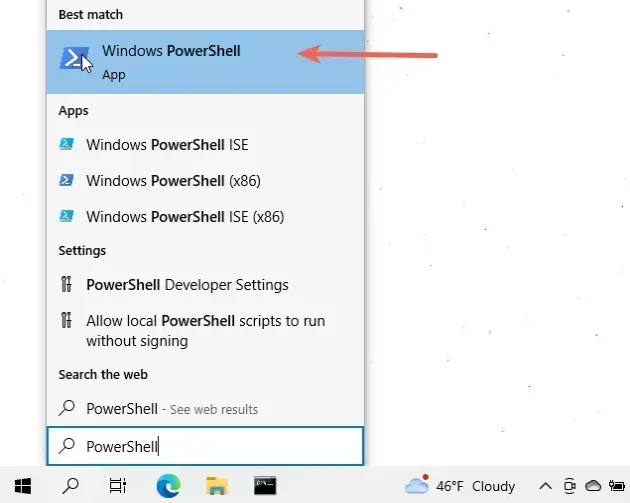
- Click on the "Windows PowerShell" application.
Use the rm command directly in PowerShell to remove a file.
rm example.txt

If you need to open PowerShell in a specific folder:
- Open the folder in a window.
- Press
Shiftand right-click in Explorer.
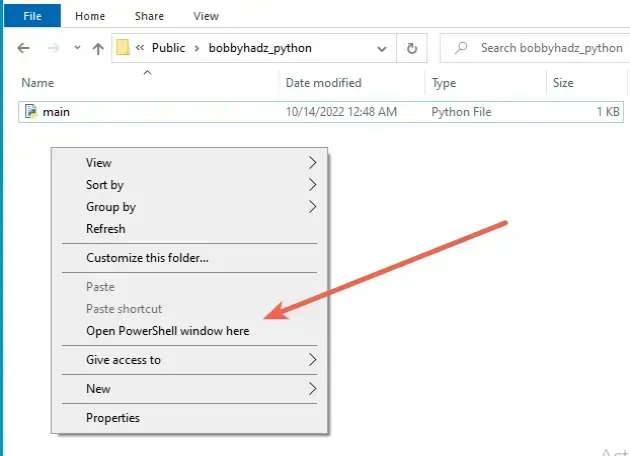
- Click on "Open PowerShell window here".
- Run the
rmcommand.
rm example.txt
rm command in Git Bash by installing git on your Windows machine.If you already have git installed, you can search for Git Bash and use the
rm command, otherwise, you have to install git first.
# Running the rm command in Git Bash
To download git and be able to use Git Bash:
- Open the git downloads page and download the installer for Windows.
- Start the installer.
- You will be prompted to select a destination location. You can leave the
default option and click
Next.
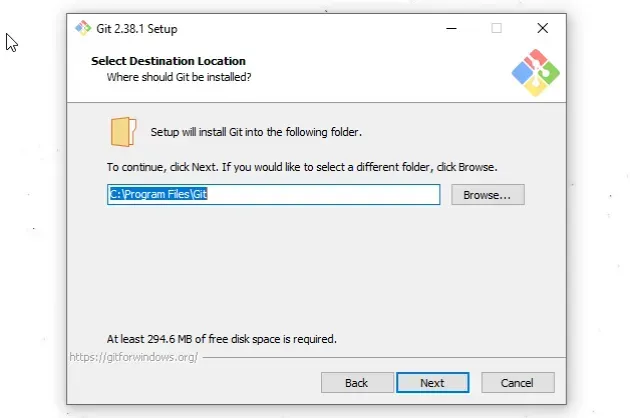
- You will be prompted to select components on the next screen. Leave the
default options and click
Next.
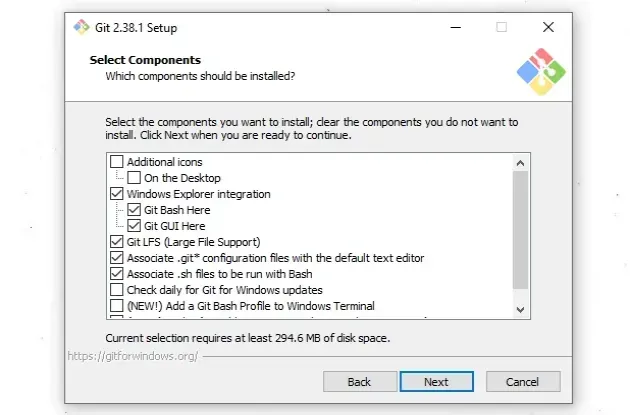
Click
Nexton the screen that prompts you to "Select Start Menu Folder".On the next screen, you can choose the default editor for
Git, e.g.Notepad,Notepad++or any other editor you prefer.
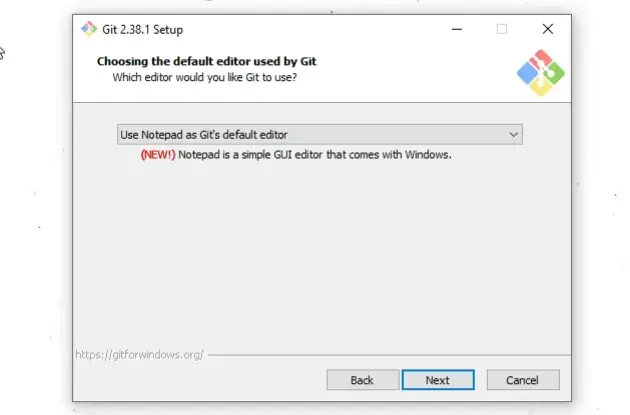
- On the "Adjust the name of the initial branch in new repositories screen",
click
Next.
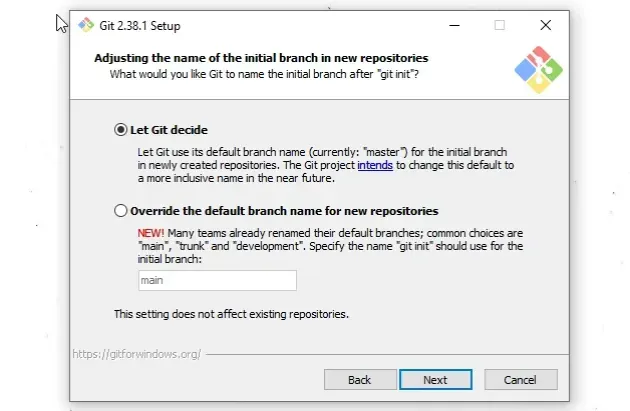
- On the "Adjust your PATH environment" screen, make sure you have the default option of "Git from the command line and also from 3rd-party software" option selected and click "Next".

- For all the remaining screens, leave the default option selected and click
Next. - Lastly, click on the
Installbutton to installgit.
Once you have git installed, click on the Search field, type "Git Bash"
and start the application.
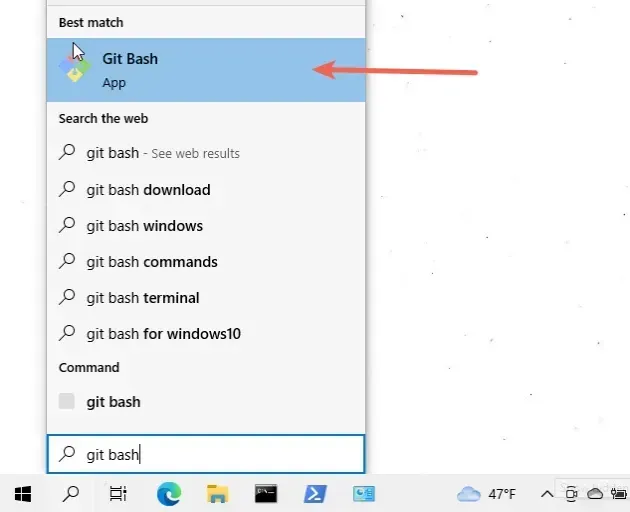
Now you can use the rm command directly in Git Bash.
rm example.txt

If you need to open Git Bash in a specific folder:
- Open the folder in a new window.
- Right-click in Explorer.

- Click "Git Bash Here".
Now you can use the rm command to delete a file.
rm example.txt
# 'mv' is not recognized as an internal or external command
The error "'mv' is not recognized as an internal or external command, operable
program or batch file" occurs when we use the mv command on Windows, in a CMD
shell.
To solve the error, use the move command to move one or more files from one
directory to another.

The move command is the Windows equivalent of the Unix mv command.
# 👇️ Move a file called my_file.txt to my_folder move my_file.txt my_folder # 👇️ Move all files with .xls extension from the \Data directory to \second_q\reports directory move \data\*.xls \second_q\reports\

You can check out the parameters the command takes and some examples in this section of the docs.
If you get a permissions error, you have to open CMD in administrator mode to be able to use the command.
To open CMD as an administrator:
Click on the Search bar and type CMD.
Right-click on the Command Prompt application and click "Run as administrator".
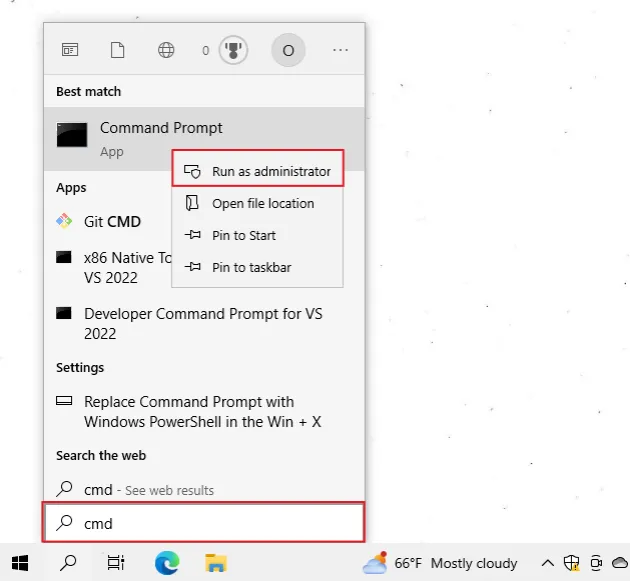
- Issue the
movecommand.
# Using the mv command in PowerShell on Windows
Note that you can use the mv command in PowerShell.
To open PowerShell:
- Click on the Search bar and type "PowerShell".

- Click on the "Windows PowerShell" application.
Use the mv command directly in PowerShell to move one or more files from one
directory to another.
mv my_file.txt my_folder

If you need to open PowerShell in a specific folder:
- Open the folder in a window.
- Press
Shiftand right-click in Explorer.

- Click on "Open PowerShell window here".
- Run the
mvcommand.
mv command in Git Bash by installing git on your Windows machine.If you already have git installed, you can search for Git Bash and use the
mv command, otherwise, you have to install git first.
# Running the mv command in Git Bash
To download git and be able to use Git Bash:
- Open the git downloads page and download the installer for Windows.
- Start the installer.
- You will be prompted to select a destination location. You can leave the
default option and click
Next.

- You will be prompted to select components on the next screen. Leave the
default options and click
Next.

Click
Nexton the screen that prompts you to "Select Start Menu Folder".On the next screen, you can choose the default editor for
Git, e.g.Notepad,Notepad++or any other editor you prefer.

- On the "Adjust the name of the initial branch in new repositories screen",
click
Next.

- On the "Adjust your PATH environment" screen, make sure you have the default option of "Git from the command line and also from 3rd-party software" option selected and click "Next".

- For all the remaining screens, leave the default option selected and click
Next. - Lastly, click on the
Installbutton to installgit.
Once you have git installed, click on the Search field, type "Git Bash"
and start the application.

Now you can use the mv command directly in Git Bash.
mv my_file.txt my_folder

If you need to open Git Bash in a specific folder:
- Open the folder in a new window.
- Right-click in Explorer.
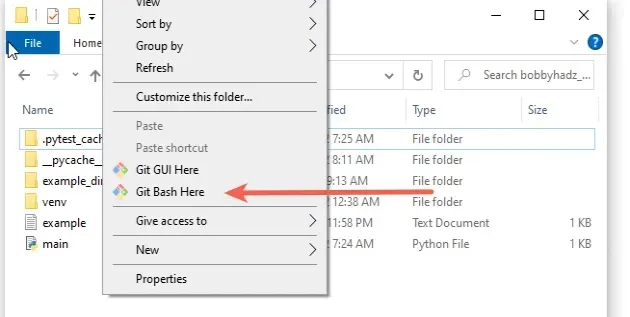
- Click "Git Bash Here".
Now you can use the mv command to move one or more files from one directory to
another.
mv my_file.txt my_folder
# Additional Resources
You can learn more about the related topics by checking out the following tutorials:
- The term 'pip' is not recognized as the name of a cmdlet
- 'touch' is not recognized as an internal or external command
- 'grep' is not recognized as an internal or external command
- 'wget' is not recognized as an internal or external command
- Windows Equivalent of the 'ls', 'which' and 'ln' commands
- The Windows equivalent of the Unix 'tee' command
- The Windows equivalent of the Unix 'pwd' command
- Windows equivalent of the Unix 'tail' command
- How to install and use 'jq' on Windows
- 'make' is not recognized as an internal or external command
- gh: command not found / gh is not recognized errors [Fixed]

